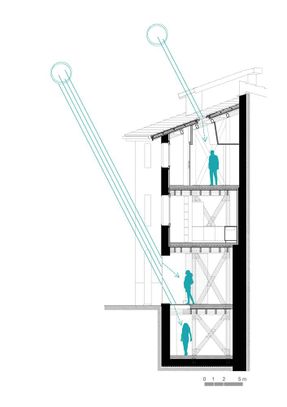ARCHITECTS
traverso-vighy architetti
DESIGN TEAM
Giovanni Traverso, Paola Vighy
PHOTOGRAPHS
Alessandra Chemollo
YEAR
2010
LOCATION
Vicenza, Italy
CATEGORY
Mixed Use Architecture, Houses, Offices
ON THE 12TH CENTURY WALLS
The Ceschi House leans against the 12th century walls of the city of Vicenza. The architects have “listened” to the existing building carefully:
restoring the original walls using traditional techniques, while developing the interior as an independent project which allowed the redistribution of the inner spaces in a functional manner.
RESTORATION AND SUSTAINABILITY
The vision of the restoration as a quest for sustainability has been pursued in the broadest sense of the term, including technical, economic and energy issues.
The aim was to create a lightweight structure, that has a character of reversibility, built with high-tech systems, which allowed a period of prefabrication, and streamlining of the implementation and installation phases.
A NEW LARCH SKELETON
In the restoration of the Ceschi house, a new structure was designed to fit inside the existing empty walls:
a skeleton of laminated larch wood which extends the full height of the building, defining its distribution and establishing a collaborative relationship with the container characterized by an outstanding anti-seismic performance.
The new structure makes no alterations to the exterior load-bearing walls, but replaces the structural function of existing internal partitions with a lightweight frame system.
All the elements which make up the structure were prefabricated, enabling a high level of precision in survey, design and execution.
NATURAL MATERIALS AND LOW ENERGY
For the thermal insulation of the building, which has been classified as class A, a system of insulating panels were set inside the existing masonry walls, consisting of multilayer insulation laid on a wood and compressed earth panels.
These compressed earth panels have high thermal mass and regulate the humidity of the internal environment, making a marked improvement in the heating and cooling performance of the building, and the level of comfort and well-being of its inhabitants.
DAYLIGHT AND TRANSPARENCY
In the interior glass is used for its diffusive character both on structural solutions and for interior design: the natural light which flows from the outside is filtered by both horizontal and vertical glass surfaces, creating a sense of continuity between the spaces.















